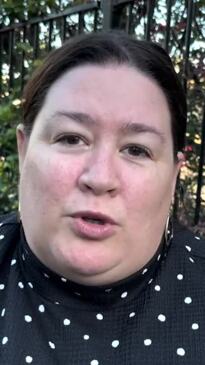Noel Pearson blasts teachers’ union for ‘appalling’ ban on explicit instruction
Noel Pearson has blamed the ‘appalling’ teachers’ union for Australia’s falling literacy standards, and blasted it for blocking reforms to help First Nations children read and write.

Aboriginal activist Noel Pearson has blamed the “appalling” teachers’ union for Australia’s falling literacy standards, and blasted it for blocking reforms to help First Nations children read and write.
Mr Pearson said the Australian Education Union “could not be more against the interests of children’’.
“They are oblivious, or completely blind, to the evidence about what’s effective in education, and the teaching of reading particularly,’’ he told The Weekend Australian.
“It’s just tragic. Teacher unions used to be the champions of explicit instruction, but today they’re the complete opposite.
“They’re the major reason why we haven’t made much progress in Australia and we’ve been sliding down the international rankings for 30 years straight.’’
The AEU, which flew 250 drones in a light show over Sydney Harbour last week to highlight its campaign for extra funding for public schools, refused to comment on Friday.
Federal opposition education spokeswoman Sarah Henderson also attacked the union’s “dangerous’’ ideology.
“These activists are running a grossly irresponsible and dangerous agenda which confirms they are more interested in indoctrinating children than ensuring success in the classroom,’’ Senator Henderson said.
One in three Australian children failed to meet baseline standards in this year’s NAPLAN, with 400,000 children falling so far behind they require remedial tutoring to catch up.
Ninety per cent of Indigenous children in remote communities failed to reach the minimum standards of literacy and numeracy this year, with three-quarters needing catch-up intervention.

Mr Pearson, a prominent Cape York lawyer and activist, is the founder and co-chair of Good to Great Schools Australia, which has developed free direct instruction materials supplied to teachers in 2600 Australian schools.
He said it was “just appalling’’ that the AEU had directed its members to boycott reforms outlined in the Albanese government’s national schools agreement – including small-group tutoring, phonics-based reading instruction, a year 1 numeracy test and explicit teaching methods.
He said disadvantaged students benefit from direct instruction – an old-school teaching method involving clear step-by-step explanations, repetition and student practice, which was abandoned in the 1980s for the fads of “student-directed learning’’ and whole-word recognition.
Mr Pearson said many First Nations children living in remote areas can’t speak English when they start school.
“The phonemes (sounds) of English are foreign to their ancestral languages,’’ he said.
“They haven’t grown up in houses where English is spoken, where books are in the house.
“There’s a language challenge for remote kids so explicit instruction in the phonemes of English is probably the most beneficial thing I’ve seen.’’

Mr Pearson called for Aboriginal children to be taught phonics for 20 minutes a day in childcare and preschool, to “get them up to the starting line’’ at school.
“By the time they hit prep (the first year of school), our kids can be ahead of non-Indigenous kids in mainstream state schools,’’ he said.
“The best way to close the gap is to never let the gap open up in the beginning.
“In America, in England, all over the world people are waking up to explicit instruction, and these guys in Australia have still got their heads in the sand.’’
Australian Curriculum, Assessment and Reporting Authority attendance data shows that First Nations students were twice as likely as other children to miss more than 10 per cent of school days in 2023.
But Mr Pearson said “attendance alone is not enough, if you’re not going to fix up the teaching’’.
Federal Education Minister Jason Clare has doubled federal funding to the Northern Territory in return for reforms to teaching methods and higher targets for school attendance and academic achievement.
He has offered $16bn in bonus federal funding to the states and territories in return for them signing up to evidence-based teaching reforms in the Better and Fairer Schools agreement – but so far only the NT, the ACT, Western Australia and Tasmania have signed.
The biggest public schooling systems of NSW, Queensland and Victoria are refusing to sign unless the Albanese government doubles its funding offer – a standoff that will leave 80 per cent of public schools without the extra funding next year.
Mr Pearson predicted that Mr Clare will fail to embed his reforms into schools operated by state and territory governments.
“The commonwealth can mandate a bloody Australian flag pole in every school, but it’s so difficult to mandate a pedagogical practice in these schools,’’ he said.
“You can negotiate till the cows come home. I think how many times people have tried to do this since 2005, and I think Jason’s not going to do much better.’’

Mr Clare champions phonics-based reading instruction, declaring on Friday that the “reading wars are over’’.
“We know explicit teaching methods work,’’ he said.
“It’s why I am tying funding to those practical reforms that will help children catch up, keep up and finish school.
“I’m also strengthening the courses teachers do at university to make sure they’re better prepared to teach children to read, write and do maths … and investing in short courses for current teachers to help them with explicit teaching methods.’’
But Senator Henderson said Mr Clare was “too weak’’ and his reform agreement was “totally inadequate and imposes no consequences on states and territories for failing to deliver direct instruction in their schools’’.
“There can be no compromise,’’ she said.

Mr Clare has embraced the reforms started by former Coalition education minister Alan Tudge, by mandating that universities include explicit instruction methods in all teaching degrees by the end of next year.
Mr Tudge, who quit politics last year, on Friday called for an inquiry into universities’ teacher training failures.
Mr Pearson said the best way to make universities change their ways would be to allocate teaching places to schools, which could then decide which universities should train their teachers.
“The demand has got to come from the schools,’’ he said.
“I would give schools the right to take those teacher education places and offer it to teaching students who go and do the courses that the school wants them to do.
“Teachers have to be properly educated in explicit instruction, the science of reading and the science of learning.’’








To join the conversation, please log in. Don't have an account? Register
Join the conversation, you are commenting as Logout